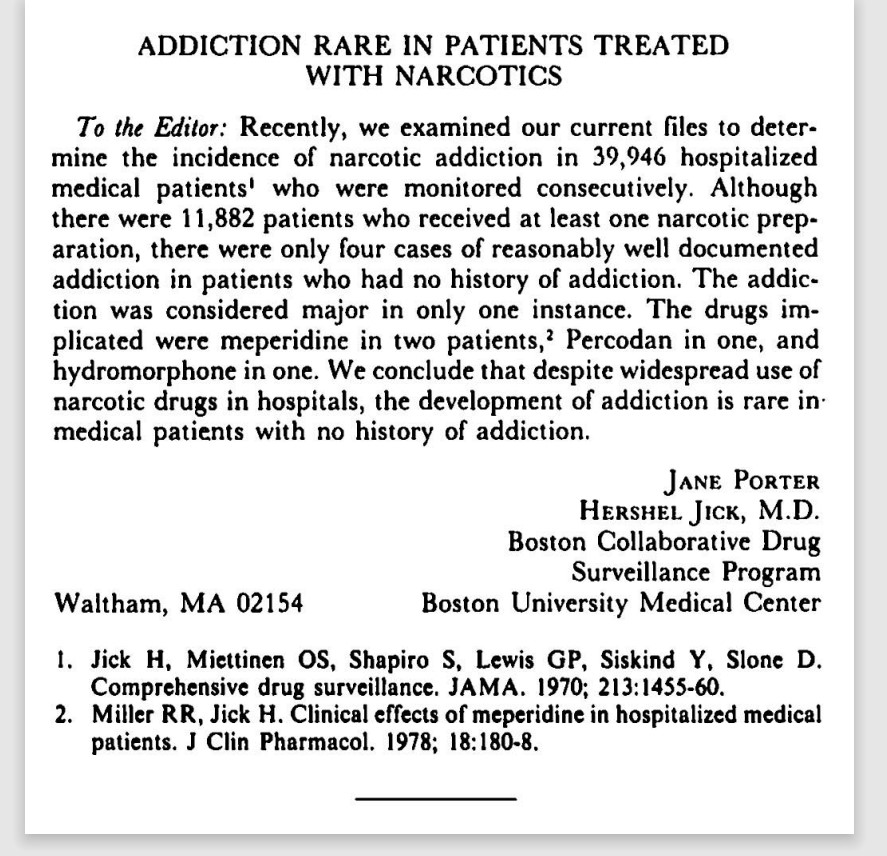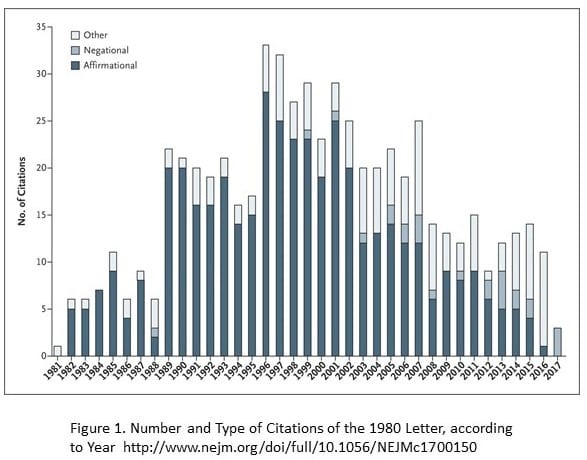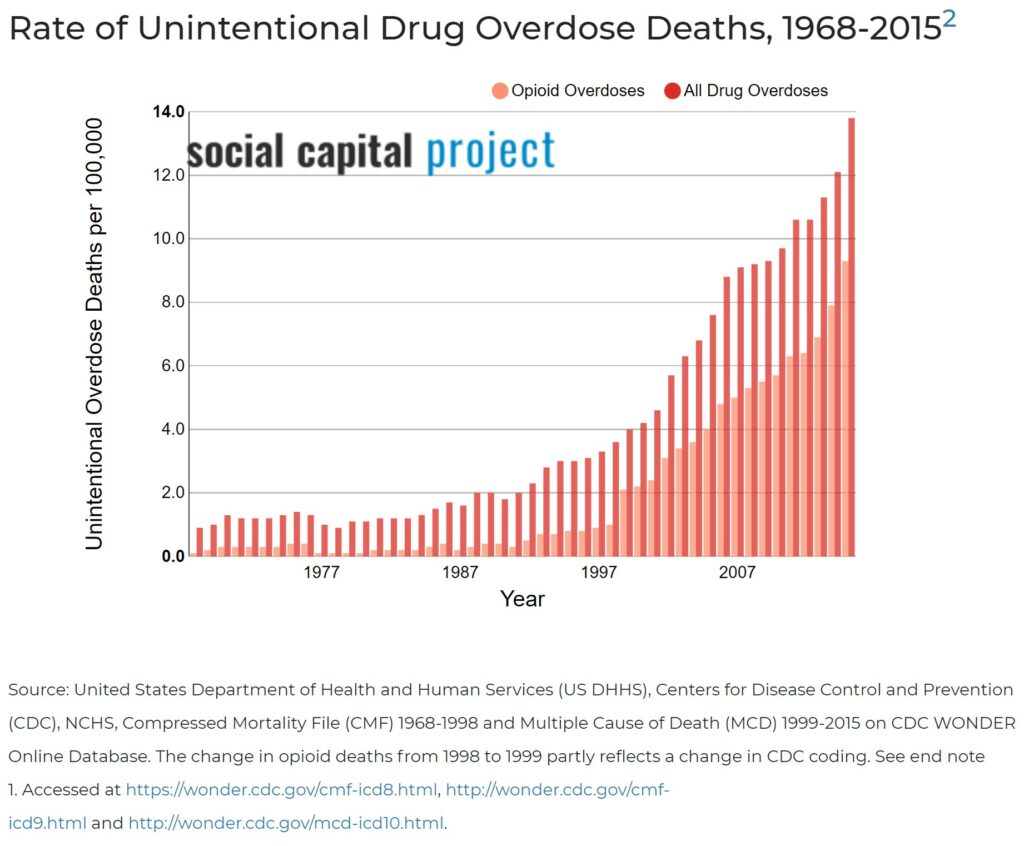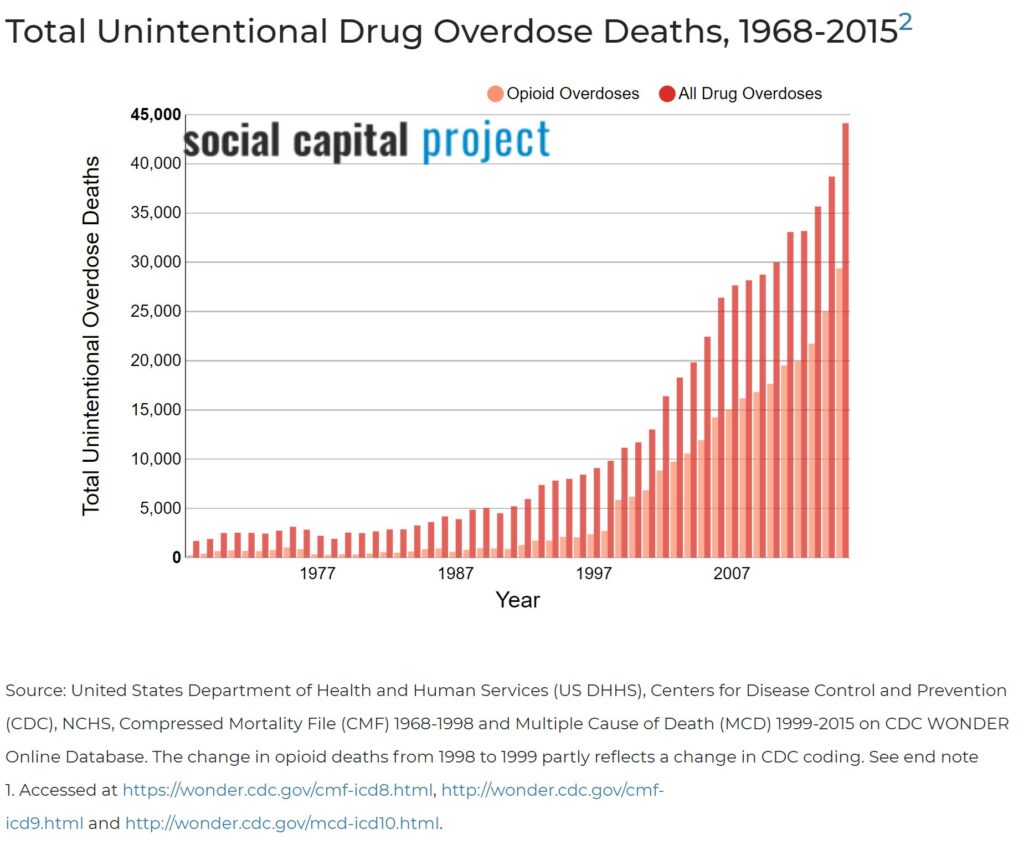That is a pretty dumb question. There are still some who claim they are not even to blame or responsible after a couple of decades of Pharma spreading around this poison. Now some are trying to make the others who are restricting the use of legal drugs the enemy. Some opening points before I get into the next part of this entitled topic. In 2015, 227 million prescriptions were written for opioids such as OxyContin, Vicodin, and Fentanyl. This was enough prescriptions to give nine of ten adults a bottle of pills. With its aggressive lobbying, the pharmaceutical industry maintains the “status quo of aggressive prescribing of opioids and reaping enormous profits” according to Dr. Andrew Kolodny of Physicians for Responsible Opioid Prescribing. “Big
Topics:
run75441 considers the following as important: Healthcare, Jick and Porter, law, MedPage Today, NEJM, opioids, politics, Purdue
This could be interesting, too:
Robert Skidelsky writes Lord Skidelsky to ask His Majesty’s Government what is their policy with regard to the Ukraine war following the new policy of the government of the United States of America.
Joel Eissenberg writes No Invading Allies Act
Ken Melvin writes A Developed Taste
Bill Haskell writes The North American Automobile Industry Waits for Trump and the Gov. to Act
That is a pretty dumb question. There are still some who claim they are not even to blame or responsible after a couple of decades of Pharma spreading around this poison. Now some are trying to make the others who are restricting the use of legal drugs the enemy.
Some opening points before I get into the next part of this entitled topic.
- In 2015, 227 million prescriptions were written for opioids such as OxyContin, Vicodin, and Fentanyl. This was enough prescriptions to give nine of ten adults a bottle of pills. With its aggressive lobbying, the pharmaceutical industry maintains the “status quo of aggressive prescribing of opioids and reaping enormous profits” according to Dr. Andrew Kolodny of Physicians for Responsible Opioid Prescribing. “Big Pharma Influence in State, Federal Government, and Everyday Life“
- In 2018 law makers questioned Miami-Luken and H.D. Smith wanting to know why millions of hydrocodone and oxycodone pills were sent (2006 to 2016) to five pharmacies in four tiny West Virginia towns having a total population of about 22,000. Ten million pills were shipped to two small pharmacies in Williamson, West Virginia. The number of deaths increased along with the company and wholesaler profits. “Fighting Opioid and Painkiller Addiction“
- In a 42-page opinion, Oklahoma State Judge Thad Balkman details how Johnson & Johnson’s sales and marketing assured doctors the appearance of addiction in patients due to the use of J & J opioid products was actually evidence of ‘under-treated pain’ and required the prescribing of more opioids. Sales representatives used these aggressive marketing tactics to target prescription-happy doctors referred to as ‘Key Customers’ in internal correspondence.” J & J and It’s Subsidiary Janssen’s Actions “Created a Public Nuisance”
Is ‘Big Pharma’ To Blame For the Opioid Crisis? MedPage’s article lets Pharma off the hook as well as many of the supposed medical industry (commoners such as I can no longer comment there) related commenters to this article. It misses the how we got to this point with medically distributed opioids by ignoring what Purdue did. I intend to use this opportunity to review the circumstance.
So, is big Pharma to blame for the Opioid Crisis?
Your damn right they are mostly to blame. They did everything possible to promote opioids, promote its usage, declare its safety, and block any legislation to promote the safe use of it. So now we have stricter laws limiting prescription quantities, etc. and the complaints are rabid
There is a move afoot to assign blame for the opioid plague elsewhere other than where it belongs, with pharma companies and in particular with Purdue. If you read the article, it attempts to blur an issue which is very clear. Purdue influenced the marketplace with false information. They were successful and made $billions.
If you read the comments to the MedPage article, you can see some rather confused commentary. I am going to go back and attempt to give you a timeline of how we got to where we are pre-fentanyl as there is a discernable pattern and practice to the abuse of prescribed opioids.
__________
From a NEJM article “A 1980 Letter on the Risk of Opioid Addiction,“
The prescribing of strong opioids such as oxycodone has increased dramatically in the United States and Canada over the past two decades.1 From 1999 through 2015, more than 183,000 deaths from prescription opioids were reported in the United States,2 and millions of Americans are now addicted to opioids. The crisis arose in part because physicians were told that the risk of addiction was low when opioids were prescribed for chronic pain.
In 1980, Doctors Jick and Porter had written a “one-paragraph letter” that was published in the New England Journal of Medicine. It was “widely invoked in support of the claim the use of Opioids does not cause addiction. No evidence was provided by the correspondents using the letter as a citation (see Section 1 in the Supplementary Appendix, at NEJM.org).” The correspondents left out the phrase “in hospitals” which defined in what setting were opioids administered.
According to other literature I have read, supposedly Dr. Jick came to regret writing the one paragraph. The key comment here (and to be redundant) is; “We conclude that despite the widespread use of narcotic drugs “in hospitals,” the development of addiction is rare in medical patients with no history of addiction.”
It is pretty obvious the text of the short letter said a “hospital setting.” Those two words were not included in many citations of the Jick and Porter letter.
As examples, I include some of the comments by doctors citing the Jick and Porter letter. This is taken from the supplemental page. Specifically each comment made is missing the terminology “hospital setting.”
“In truth, however, the medical evidence overwhelmingly indicates that properly administered opioid therapy rarely if ever results in “accidental addiction” or “opioid abuse”.”
“Fear of addiction may lead to reluctance by the physician to prescribe. […] However, there is no evidence that this occurs when prescribing opioids for pain.”
“In reality, medical opioid addiction is very rare. ln Porter and Jick’s study on patients treated with narcotics, only four of the 11,882 cases showed psychological dependency.”
“Physicians are frequently concerned about the potential for addiction when prescribing opiates; however, there have been studies suggesting that addiction rarely evolves in the setting of painful conditions.”
“Although medicine generally regards anecdotal information with disdain (rigorously controlled double-blind clinical trials are the “gold standard”), solid data on the low risk of addiction to opioid analgesics and the manageability of adverse side effects have been ignored or discounted in favor of the anecdotal, the scientifically unsupported, and the clearly fallacious.”
“The Boston Drug Surveillance Program reviewed the charts of nearly 12,000 cancer pain patients treated over a decade and found only four of them could be labeled as addicts.”
In 1996 with the introduction of OxyContin by Purdue Pharma, the use and abuse of the letter almost tripled. On one particular chart (displayed further down), we can see the introduction of OxyContin in 1996 and a year or so later the death rate per 100,000 doubles and continues to increase yearly.
“The aggressive sales pitch led to a spike in prescriptions for OxyContin of which many were for things not requiring a strong painkiller.”
Upon release Purdue’s new opioid prescription medication called OxyContin, a promotional marketing video called ‘I got My life Back,’targeted doctors. “a doctor explains opioid painkillers such as OxyContin as being the best pain medicine available, have few if any side effects, and less than 1% of people using them become addicted.”
Again, no mention of a “hospital setting.”
Purdue’s OxyContin, originally sold in 80 milligram tablets, was appropriate, its label said, “for the management of moderate to severe pain where use of an opioid analgesic is appropriate for more than a few days.”
“The drug companies were ‘educating’ the doctors,” Ling says. “But there’s a very thin line between educating doctors and promoting your product.”
Opioids: A Crisis Decades In the Making (webmd.com)
Purdue and other companies repeatedly crossed the thin line of educating doctors and put the emphasis on promoting sales.
Just how bad was the citation of the Jick and Porter letter in the 1980 NEJM?
Going to a 2017 NEJM article “A 1980 Letter on the Risk of Opioid Addiction,” we can see the number of citations by year. A bibliometric analysis was made of this correspondence from its publication until March 30, 2017.
- Identified were 608 citations of the index publication. Noted was a sizable increase of the letter’s use after the introduction of OxyContin (a long-acting formulation of oxycodone) in 1995 (Figure 1).
- Of the articles that included a reference to the 1980 letter, the authors of 439 (72.2%) cited it as evidence that addiction was rare in patients treated with opioids.
- Of the 608 articles, the authors of 491 articles (80.8%) did not note that the patients who were described in the letter were hospitalized at the time they received the prescription.
Some authors (see above quotes) grossly misrepresented the conclusions of the letter in their comments. (Section 3 in the Supplementary Appendix) of this article.
So was the Jick and Porter letter important? In 1996 Purdue introduced OxyContin. The number of citations increased from 1996 through 2002 and descended till 2017. From 1980 onward till 2015 the letter was cited 5 to 28 (1996) times per year affirming Opioids addition is rare minus the words “hospital setting.”
The A 1980 Letter on the Risk of Opioid Addiction,” dated June 1, 2017 authored by Doctors Leung, Macdonald, Dhalla, and Juurlink. The Supplemental Appendix which has the Jick and Porter Letter (cited) is a part of this article.
“In Prescription Painkiller Addiction: A Gateway to Heroin Addiction,” Recall Report organization documents the start of the explosion in opioid use tying it to the introduction of OxyContin by Purdue Pharma in 1995/96. Initially introduced here: Fighting Opioid and Painkiller Addiction Angry Bear September 2018.
So far we know the Jick and Porter letter (above) was cited more times than the median number of citations for other letters. In my exploration of attempting to find the impact of OxyContin and Opioids earlier, I ran across a report by the U. S. Senate Joint Economic Committee, The Rise in Opioid Overdose Deaths. The next two graphs are from the report.
Click on each image to enlarge . . .
From 1980 to 1996, we do not see much in the way of overdose deaths until we get to the mid-nineties and then there is a notable increase in the rate and number of deaths from drug and opioid use. This corresponds with the abusive citation of the 1980 Jick and Porter letter and the introduction of OxyContin. As a LSS practitioner, I would conclude it points in a direction where a deeper dive would be warranted. I am relatively confident the abuse of OxyContin is due to Pharmaceutical Companies misusing the Jick and Porter lettering promoting Oxycontin.
We do have an introduction of the new time-released OxyContin, numerous wrongful citations of the Jick and Porter letter and a pattern of increasing deaths due to drug and opioid use. Did the introduction of OxyContin and the manner it was supported result in greater deaths. Given the way we arrived at this, I would say it did.
MedPage’s Is ‘Big Pharma’ To Blame For the Opioid Crisis? , by Shoshana Aronowitz, PhD, MSHP, FNP-BC,, December 21, 2021 appears to let big Pharma off the hook the same as many of the commenters to this article.




